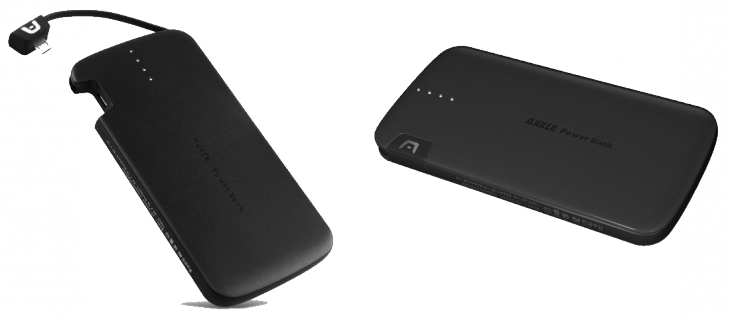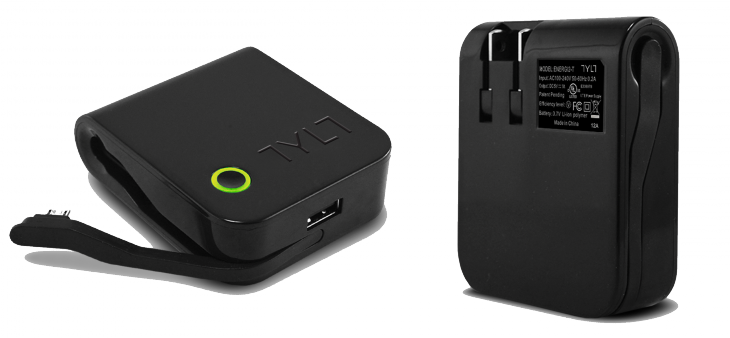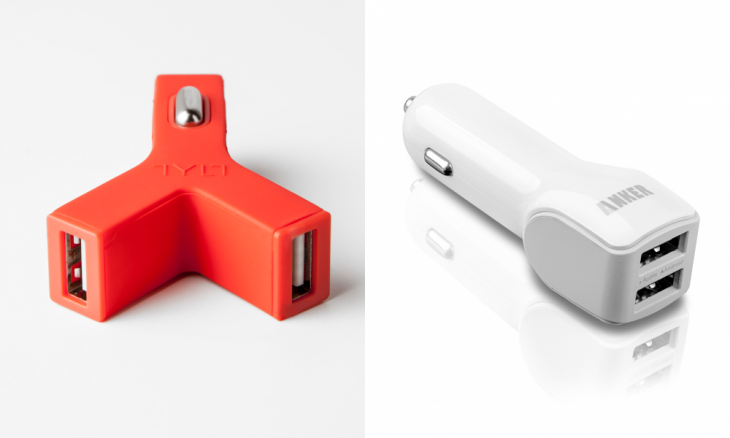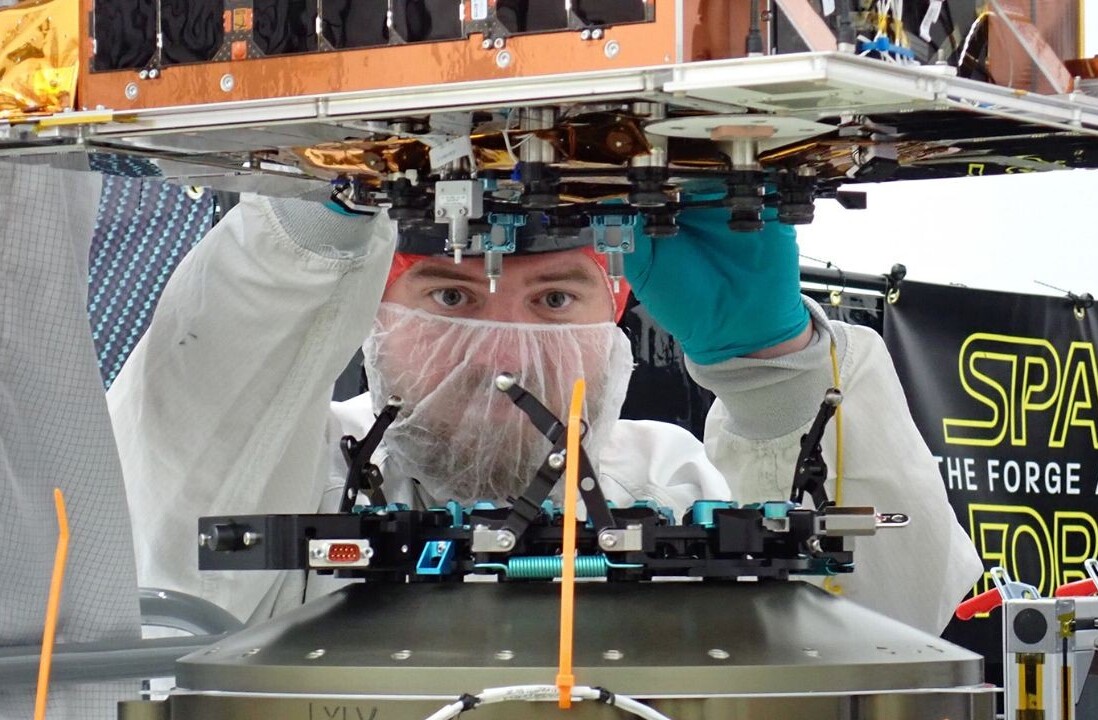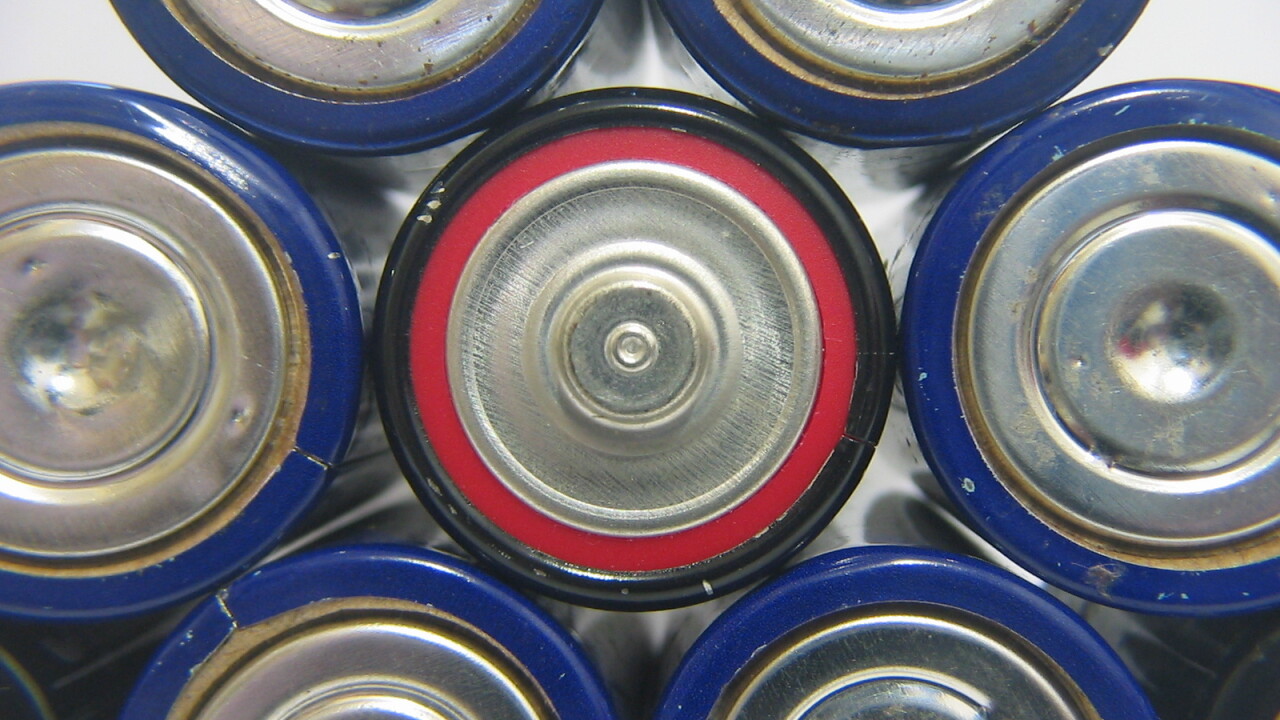
Let’s discuss smartphone and tablet battery life. It is atrocious. Thankfully a few temporary solutions to this problem exist, as we wait for battery technology to catch up and for manufacturers to stop trying to slim down products and focus on making them last. Today we’ll be talking about two options consumers have: external battery packs and car chargers.
I had the pleasure of mashing three products head-to-head in the external battery arena as well as two from the car charger space. All of these are options when you need to charge your device on the go, but some are better than others.
External battery packs
These are great if you keep two things in mind: the external batteries may not be able to charge your device fully, and they have to be charged first. If you’re going on a long trip where you don’t expect, or don’t want to look for, access to power, these are for you.
First up is Anker’s Astro Slim2 4500mAh External Battery. It retails for about $50 but you should be able to find it on sale for a bit over half of that without much difficulty.
- Pros: The design is very sleek, it feels great in your hand, and it fits neatly beside your phone. It does not heat up while recharging from your computer nor wFhen charging a device. The recharging indicators are very well implemented both for recharging and charging.
- Cons: The battery appears to lose capacity after multiple charges: it can barely charge a typical Android phone and can only charge a BlackBerry twice. Upon first use, it could easily charge an Android phone more than once and charge a BlackBerry more than three times. Although it has a micro USB plug built-in and an option to plug in a second, we couldn’t get it to charge two devices at once.
Next we have Tylt’s Energi Travel Charger w/ Built-in Battery. It retails for about $50 as well.
- Pros: This one has a fold-away AC wall-charger, which comes in very handy when you want to recharge it without the use of a computer.
- Cons: The battery appears to lose capacity after multiple charges: it cannot charge a typical Android phone and can only charge a BlackBerry twice. Upon first use, it could easily charge an Android phone and charge a BlackBerry three times. The recharging indicator is a bit too simplistic: light on when recharging and off when done, but no way to tell current battery level or progress. During our testing we noticed it became noticeably hot while charging devices.
Lastly we tested Tylt’s PowerPlant Portable Battery Pack Micro USB Connector. It retails for about $70 but you should be able to find it on sale for less than half.
- Pros: After multiple recharges, the battery degrades but is still more than capable to charge any smartphone. The recharging indicators are very well implemented both for recharging and charging. It has a Micro-USB plug built-in and an option to plug in a second, and both can be used at once.
- Cons: The design is quite bulky and we found that the unit heats up while charging devices.
In short, the Astro Slim2 has the best design, the Energi has a very useful wall-charger, but the PowerPlant is the best at getting the job done.
Car chargers
These are great if you travel around in a car a lot, and you don’t want to carry around an extra item with you. Just remember that in the end, you’re using up your car battery.
Tylt’s Y-CHARGE 2.1 Dual USB Car Charger goes for $25. Its design is meant to point each of its ports in separate directions, but we found this unnecessary. The real advantage here is that its charging rate can go up to 2.1A for both devices.
Anker’s 18W / 3.6A Dual-Port Car Charger goes for $30. It is bigger than its competitor, but it’s only real advantage is for Apple fans (unless of course you require a lightning connector) since it includes a 2.1A port that lets iOS devices charger faster than other phones and tablets on the second 1.5A port.
Both car chargers have two USB ports and both get the job done just as you’d expect, although in the end we prefer Anker’s solution. Since the two are both quite sufficient, however, we recommend buying the one which you are able to find at the best price.
Final Thoughts
Both Anker and Tylt design great products, and while it’s difficult to see how much more innovation could possibly go into such simple products, there is definitely room for improvement. In the end, however, we can’t help but hope better battery technology and wireless charging make the above obsolete.
Note: Tests were performed with a Samsung Galaxy S II X and a BlackBerry Bold 9900. Your mileage may vary.
Top Image Credit: Wanderlei Talib
Get the TNW newsletter
Get the most important tech news in your inbox each week.
